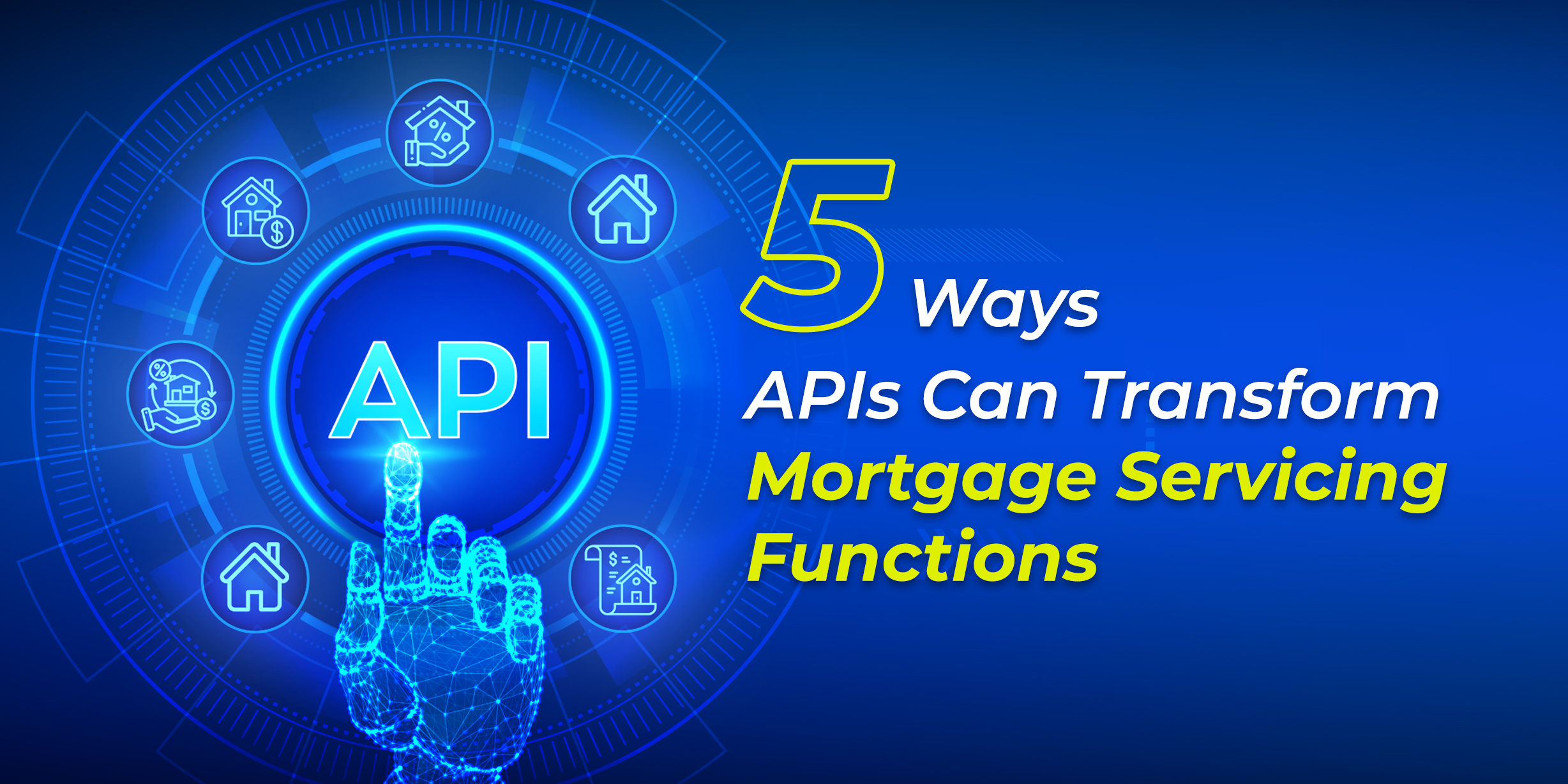The success of digital transformation in mortgage hinges on the integration between systems. Data from historical records and borrower information stores can speed up credit approvals. Integration between loan origination systems (LOS) and point of sale (POS) makes mortgage operations more efficient and also improves the borrower experience. System integration is also central to mortgage service automation, which needs the seamless flow of data to trigger events and actions.
Now the traditional way of building integrations in mortgage is to develop the connector code from scratch. Of course, our expert DevOps teams can build integrations swiftly in an agile model – but his code-based approach results in effort and cost duplication. It means that your journey toward process optimization will be delayed, and every service automation project will require fresh development.
That is where packaged connectors called application programming interfaces (APIs) come in.
Read more: Maximizing Mortgage Servicing Efficiency: Best Practices
What Are APIs in Mortgage?
An application programming interface or API in mortgage is defined as a piece of programming that allows different software systems to communicate with each other – for example, sharing data, triggering actions, copying information, and so on.
APIs are typically available in a “packaged” format, which makes them ideal for process optimization. This means that an API can be easily set up between two mortgage systems with minimal technical knowledge and effort, allowing even business users (with some technical proficiency) to optimize mortgage servicing processes.
When purchasing a mortgage software product, you will find that it comes with an API library. This library contains documentation that describes how to use the APIs available for the software. Ready-to-use APIs may be available for popular financial services products, collaboration tools, CRMs, etc., while custom ones are used to connect mortgage systems with industry-specific/proprietary systems.
Read more: Mortgage Loan Servicing Market: What to Expect in 2023?
Benefits of Using APIs for Mortgage Servicing
Application programming interfaces have widespread relevance for mortgage process optimization, including servicing. Modern servicing functions rely heavily on service automation, which requires data to flow from one environment to another, trigger alerts, and initiate automated actions. Without APIs, different environments would not be able to “talk” to each other to make this exchange possible.
The key reasons to use APIs in mortgage servicing include:
1. Accelerating the digitization of the servicing function
Mortgage servicers are tasked with collecting a host of borrower information and then following up to ensure streamlined loan processing, timely payments, compliance, and in certain cases, servicing of default loans. This entire process involves various data silos that can be broken down using APIs. Application programming interfaces would allow disparate data stores to communicate more effectively, also incentivizing servicers to convert their paper records into a digital format.
2. Preventing errors on the servicing pathway
The mortgage servicing function has come under increasing scrutiny in the US, specifically in relation to equal opportunity learning practices and the fair treatment of borrowers. To achieve process optimization without compromising on compliance, servicers need ready access to the full customer history and credit and income information. APIs help build the right connections between loan data systems to transform borrower data journeys. Mortgage servicers can make compliant and fair decisions regarding borrower relationships and prevent errors.
3. Drive near-real-time actions and minimize delays
Due to the highly complex nature of servicing functions, mortgage executives are always struggling with delays – exacerbated due to over-reliance on manual efforts and the absence of service automation. Correctly placed APIs have the potential to create connected workflows that trigger automated alerts and actions. For example, the borrower can be notified that they have a new servicing message awaiting them so that they do not delay the conversation. This also applies to backend servicing processes, significantly speeding up work for mortgage executives.
4. Accessing a variety of third-party services
Application programming interfaces effectively open up the mortgage industry to a wide variety of third-party digital services. This includes identity verification, open banking, data enrichment, mobile banking, knowledge portals, and much more.
For example, ComplyAdvantage offers an API that checks borrower data against anti-money laundering intelligence. Several identity management providers offer easy-to-integrate KYC APIs, and emerging artificial intelligence APIs can revolutionize servicing process optimization. All of these third-party APIs are well-tested and secured, so mortgage companies can implement them with confidence.
5. Facilitating new revenue streams for mortgage servicers
As the mortgage industry embraces digital transformation, servicers will reinvent themselves as technology companies. Armed with a wealth of borrower information and industry intelligence, they can build APIs to be purchased or leased out as part of their digital mortgage offerings. APIs facilitate recurring revenue streams and help monetize the digital know-how already existing in your organization.
Read more: ChatGPT and the Future of Mortgage Servicing: A Look into Intelligent Chatbots
APIs are Now a Mortgage Must-Have
Modern digital systems cannot exist without interconnections, and these interconnections are not viable at scale without APIs. Think of a social media platform like Facebook identifying user locations by “talking” to Google Maps. Consider banking apps that use facial recognition to unlock without actually storing any user biometric data. All of these modern intuitive functionalities are possible thanks to APIs, and nearly every type of digital process optimization relies on API technology.
Similarly, to make servicing experiences more intuitive for borrowers and more data-driven at the backend, mortgage servicing companies are turning to APIs. Combined with advanced BI systems, data fabrics, and service automation workflows, application programming interfaces can unlock significant value from your digital processes.
To set up mortgage APIs for process optimization, speak with our mortgage tech experts.



